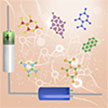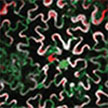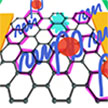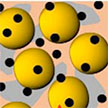Showing Spotlights 329 - 336 of 2780 in category All (newest first):
 Researchers developed a holistic approach, which predicts both Li-ion storage and supercapacitive properties and hence identifies various important electrode materials that are common to both devices, may pave the way for next-generation energy storage systems. By leveraging the big-data generated by the computational pipeline, the team trains crystal graph-based machine learning models and demonstrates how this data-driven model could be helpful for the rapid discovery of potential materials from other databases.
Researchers developed a holistic approach, which predicts both Li-ion storage and supercapacitive properties and hence identifies various important electrode materials that are common to both devices, may pave the way for next-generation energy storage systems. By leveraging the big-data generated by the computational pipeline, the team trains crystal graph-based machine learning models and demonstrates how this data-driven model could be helpful for the rapid discovery of potential materials from other databases.
Jan 13th, 2022
 Being a relatively young field, Bionanotechnology is often neglected within undergraduate and postgraduate curriculum. With an increasing number of researchers and professionals of different backgrounds coming into the field, there is a clear need to have learning platforms that cover techniques, strategies and methods that characterise the design of bionano structures. In September 2021, Cambridge Advance Online, a new educational initiative created between the University of Cambridge and Cambridge University Press and Assessment, launched a 6-week online course about Bionanotechnology: Bionanotechnology from Theory to Practice.
Being a relatively young field, Bionanotechnology is often neglected within undergraduate and postgraduate curriculum. With an increasing number of researchers and professionals of different backgrounds coming into the field, there is a clear need to have learning platforms that cover techniques, strategies and methods that characterise the design of bionano structures. In September 2021, Cambridge Advance Online, a new educational initiative created between the University of Cambridge and Cambridge University Press and Assessment, launched a 6-week online course about Bionanotechnology: Bionanotechnology from Theory to Practice.
Jan 11th, 2022
 The development of plant genetic engineering lags behind the development of animal genetic engineering. Plant cells differ from animal cells in several aspects, a major one being that, in addition to the cell membrane, they possess a wall surrounding them to provide mechanical and structural support. In recent years, breakthroughs in nanotechnology for genetic engineering have provided more favorable tools for the genetic transformation of plants. A review summarizes the types of gene carriers used in plant genetic transformation, the ways of combining with foreign genes, and the differences and advantages compared with earlier traditional transgenic methods.
The development of plant genetic engineering lags behind the development of animal genetic engineering. Plant cells differ from animal cells in several aspects, a major one being that, in addition to the cell membrane, they possess a wall surrounding them to provide mechanical and structural support. In recent years, breakthroughs in nanotechnology for genetic engineering have provided more favorable tools for the genetic transformation of plants. A review summarizes the types of gene carriers used in plant genetic transformation, the ways of combining with foreign genes, and the differences and advantages compared with earlier traditional transgenic methods.
Jan 10th, 2022
 An estimated 6.8 billion face masks are used around the world each day, which ultimately are incinerated, sent to landfills or simply dumped in the environment, providing a glimpse of a forthcoming severe global environmental crisis. Many of these synthetic face masks are non-biodegradable in nature. To address this issue, researchers have developed a 3-layered biodegradable, antibacterial, breathable, herbal-extract based, and needleless electrospun face mask.
An estimated 6.8 billion face masks are used around the world each day, which ultimately are incinerated, sent to landfills or simply dumped in the environment, providing a glimpse of a forthcoming severe global environmental crisis. Many of these synthetic face masks are non-biodegradable in nature. To address this issue, researchers have developed a 3-layered biodegradable, antibacterial, breathable, herbal-extract based, and needleless electrospun face mask.
Jan 6th, 2022
 The use of graphene-based field-effect transistors is one of the most powerful biosensing units for the detection of numerous biological and biochemical analytes. In new work, researchers propose a microscopic model of mycotoxin detection via graphene-based aptasensors enabling improvement of biosensor sensitivity, which is based on the investigation of aptamer interaction mechanism with graphene channel during binding of targeted molecules. The limit of detection is estimated at only 1 pM and time response in just 10 seconds, making the developed platform a high-performance device.
The use of graphene-based field-effect transistors is one of the most powerful biosensing units for the detection of numerous biological and biochemical analytes. In new work, researchers propose a microscopic model of mycotoxin detection via graphene-based aptasensors enabling improvement of biosensor sensitivity, which is based on the investigation of aptamer interaction mechanism with graphene channel during binding of targeted molecules. The limit of detection is estimated at only 1 pM and time response in just 10 seconds, making the developed platform a high-performance device.
Dec 22nd, 2021
 The concepts of metamaterials and metasurfaces have spawned massive novel applications in free-space optics. However, recent research also indicates that they possess prominent potential for tailoring the electromagnetic modes in optical waveguides. In a new review, researchers discuss recent advances of applying various meta-structures with diverse waveguide platforms to enhance the performance and expand functionalities for integrated photonic devices.
The concepts of metamaterials and metasurfaces have spawned massive novel applications in free-space optics. However, recent research also indicates that they possess prominent potential for tailoring the electromagnetic modes in optical waveguides. In a new review, researchers discuss recent advances of applying various meta-structures with diverse waveguide platforms to enhance the performance and expand functionalities for integrated photonic devices.
Dec 2nd, 2021
 EV manufacturing requires more energy and produces more emissions than manufacturing a conventional car because of batteries. There are many unanswered questions about the life-cycle greenhouse gas implications of electric vehicles, especially related to early estimates of battery production emissions. A new review addresses these questions and the advances in new battery chemistries, plus new insights into CO2 emissions from battery manufacturing.
EV manufacturing requires more energy and produces more emissions than manufacturing a conventional car because of batteries. There are many unanswered questions about the life-cycle greenhouse gas implications of electric vehicles, especially related to early estimates of battery production emissions. A new review addresses these questions and the advances in new battery chemistries, plus new insights into CO2 emissions from battery manufacturing.
Dec 1st, 2021
 The development of smart cities is linked to the development of new materials and devices, the use of sensor networks, the handling of huge amounts of data, the development of communication networks between objects, decision-making, and a range of other smart technologies. Many of these areas benefit from nanotechnology enabled materials and devices such as sensors, photovoltaics, efficient lighting systems or communication networks.
The development of smart cities is linked to the development of new materials and devices, the use of sensor networks, the handling of huge amounts of data, the development of communication networks between objects, decision-making, and a range of other smart technologies. Many of these areas benefit from nanotechnology enabled materials and devices such as sensors, photovoltaics, efficient lighting systems or communication networks.
Nov 30th, 2021
 Researchers developed a holistic approach, which predicts both Li-ion storage and supercapacitive properties and hence identifies various important electrode materials that are common to both devices, may pave the way for next-generation energy storage systems. By leveraging the big-data generated by the computational pipeline, the team trains crystal graph-based machine learning models and demonstrates how this data-driven model could be helpful for the rapid discovery of potential materials from other databases.
Researchers developed a holistic approach, which predicts both Li-ion storage and supercapacitive properties and hence identifies various important electrode materials that are common to both devices, may pave the way for next-generation energy storage systems. By leveraging the big-data generated by the computational pipeline, the team trains crystal graph-based machine learning models and demonstrates how this data-driven model could be helpful for the rapid discovery of potential materials from other databases.
 Subscribe to our Nanotechnology Spotlight feed
Subscribe to our Nanotechnology Spotlight feed





